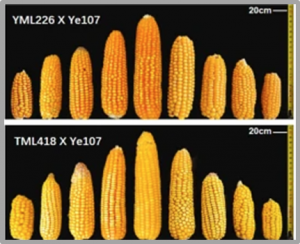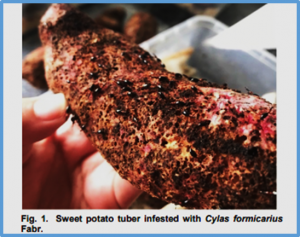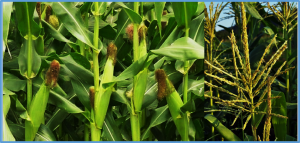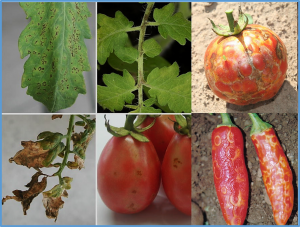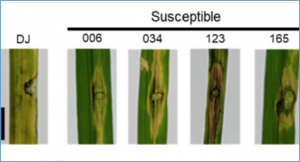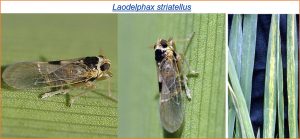Maize ear length has garnered considerable attention due to its high correlation with yield. In this study, six maize inbred lines of significant importance in maize breeding were used as parents. The temperate maize inbred line Ye107, characterized by a short ear, was crossed with five tropical or subtropical inbred lines featuring longer ears, creating a multi-parent population displaying significant variations in ear length. Through genome-wide association studies and mutation analysis, the A/G variation at SNP_183573532 on chromosome 3 was identified as an effective site for discriminating long-ear maize. Furthermore, the associated gene Zm00001d042906 was found to correlate with maize ear length.
Softening is a key factor affecting the quality and shelf life of fleshy fruits and is regulated by transcription factors (TFs). Our previous studies have shown that knockout of the NOR-like1 gene, a NAC transcription factor, can affect fruit ripening and firmness, but the molecular of NOR-like1 regulating fruit softening is not fully understand. Here, we firstly generate the NOR-like1 over-expressing lines (OE-NOR-like1),
Sweet potato is grown in tropical countries for its edible tubers, which have become an essential food source. It is usually propagated through vine-cutting, which can be obtained from harvested plants or nurseries intended for cutting production only. The recurrent use of vines may cause increased weevil infestation. The crop is known to be infested with insect pests.
Genome-wide association studies (GWAS) have emerged as a powerful tool for unraveling intricate genotype-phenotype association across various species. Maize (Zea mays L.), renowned for its extensive genetic diversity and rapid linkage disequilibrium (LD), stands as an exemplary candidate for GWAS. In maize, GWAS has made significant advancements by pinpointing numerous genetic loci and potential genes associated with complex traits, including responses to both abiotic and biotic stress
Tomato necrotic ringspot virus (TNRV) was first reported in Thailand in 2011, where it continues to reduce the yield and quality of pepper and tomato crops. Here, we report the complete genome sequence of TNRV isolate chilli-CR derived from next-generation sequencing. The TNRV genome comprises 16,595 nucleotides (nt) on three RNA segments. The L RNA is 8,858 nt, the M RNA is 4,724 nt, and the S RNA is 3,013 nt in length.
Recombination events during meiosis provide the foundation and premise for creating new varieties of crops. The frequency of recombination in different genomic regions differs across eukaryote species, with recombination generally occurring more frequently at the ends of chromosomes.
Phytophthora capsici and P. tropicalis are the two species of Phytophthora associated with foot rot disease of black pepper in India. High genetic diversity amongst the Phytophthora species contributes to its wide host range and variability in the virulence pattern. In the present study, genetic diversity of Phytophthora species infecting black pepper was analysed using RAMS (Random Amplified Microsatellites) and REP (Repetitive Extragenic Palindromic)-PCR fingerprinting.
Rice is an important cereal crop worldwide, the growth of which is affected by rice blast disease, caused by the fungal pathogen Magnaporthe oryzae. As climate change increases the diversity of pathogens, the disease resistance genes (R genes) in plants must be identified. The major blast-resistance genes have been identified in indica rice varieties; therefore, japonica rice varieties with R genes now need to be identified. Because leucine-rich repeat (LRR) domain proteins possess R-gene properties, we used bioinformatics analysis to identify the rice candidate LRR domain receptor-like proteins (OsLRR-RLPs).
A technique for chromosomal insertion of large DNA segments is much needed in plant breeding and synthetic biology to facilitate the introduction of desired agronomic traits and signaling and metabolic pathways. Here we describe PrimeRoot, a genome editing approach to generate targeted precise large DNA insertions in plants. Third-generation PrimeRoot editors employ optimized prime editing guide RNA designs
Throughout evolution, arboviruses have developed various strategies to counteract the host’s innate immune defenses to maintain persistent transmission. Recent studies have shown that, in addition to bacteria and fungi, the innate Toll-Dorsal immune system also plays an essential role in preventing viral infections in invertebrates.


 Curently online :
Curently online :
 Total visitors :
Total visitors :
